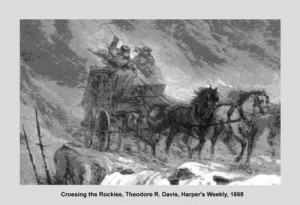Essay by Courtney White
Agriculture – September 2008 – Colorado Central Magazine
AS THE 21ST CENTURY unfolds, it’s becoming clear that we need more family farmers and ranchers on the land, not fewer. We need them not only for the food they provide, but also for a lesson in how to live on the land.
It’s an ironic turn of events.
For decades, livestock grazing in the arid West was attacked by environmentalists — vilified as an “irredeemable” activity that had to be ended on public lands, pronto.
Environmental activists extolled the sins of cattle in the scientific literature, full-page advertisements in major newspapers, colorful coffee-table books, and countless articles and lectures. Some cited writer Edward Abbey, who famously described the Western range as “cowburnt” and denounced cattle as “hooved locusts.”
Abbey died in 1989, and although the anti-grazing campaign grew more boisterous and contentious, it never really recovered from the loss of its charismatic leader. In fact, you could say the movement crested in 2001, when the national membership of the Sierra Club rejected the adoption of a “zero cow” policy for the organization by a 2-to-1 margin.
There were many reasons for rank-and-file Sierra Clubbers to vote the way they did, including a rising awareness that ranchers were trying new methods of cattle management that looked to the health of the land as well as the animals.
But I believe there was another, far more important reason. Those conservationists understood that a different sort of crisis in the West had quietly displaced the grazing debate. And this new one would have far more serious ecological consequences. I’m referring to the general sustainability crisis on everyone’s lips these days.
The issue began with concern about sprawl, the way unchecked suburbanization was chopping up open space and threatening wildlife populations. Next, we started worrying about our water — its quality and quantity — who controlled it, and who needed it.
Then Al Gore made a documentary, and suddenly the specter of planetary-scale ecological devastation became the talk of the nation. Today, our concern has spread to questions about global food supplies, energy depletion and the possible limitations to economic growth.
All of this makes the “grazing wars” of the 1990s feel like a historical footnote. Now, I think it’s time to look at the ranchers that remain in business in a new way. I’m convinced that ranching has a lot to teach us about what sustainability can mean on the ground. For one thing, grass, unlike petroleum or natural gas, is a renewable resource. It works using the original solar power of photosynthesis. If it gets the proper nutrients and moisture and isn’t grazed too frequently by any species of herbivore, it can regenerate itself endlessly. It has done this for the past 66 million years in North America.
By managing grass and water sustainably, ranchers can teach those of us who live in cities important lessons about stewardship, about ecological limitations, and about respect and humility toward the natural world.
Ranchers can also teach us about the “low-carbon footprint” benefits of producing high-quality grass-fed meat — food produced without hormones and with minimal fossil fuel inputs. Better yet, we can participate in this history lesson by buying and eating food that comes from local farmers and ranchers.
Many ranchers can also pass on important lessons beyond food. Some have joined large-scale collaborative conservation efforts, some have taken the lead on restoring damaged riparian areas on their land, some are improving wildlife habitat for rare or endangered species, some are protecting open space through conservation easements, and some are sharing their success stories with the wider world.
On many ranches around the West, sustainability is not an ideal, it’s a reality. Is everything perfect? No. The rising price of diesel, for example, threatens the financial well-being of many farms and ranches, which often operate on razor-thin profit margins. The West’s much-vaunted wide-open spaces look pretty, but they are hell on a landowner’s gas budget.
Is there still overgrazing? Yes, unfortunately. But we can’t afford the luxury of attacking all ranchers as if they were all alike. The challenges confronting us are too pressing. We need to look to one another to make living in the West work. Healing is one of our tasks this century, and I’m happy to report: On the West’s cattle ranches, it’s already begun.
Courtney White is a contributor to Writers on the Range, a service of High Country News. He lives in New Mexico, where he is the author of Revolution on the Range: The Rise of a New Ranch in the American West.


